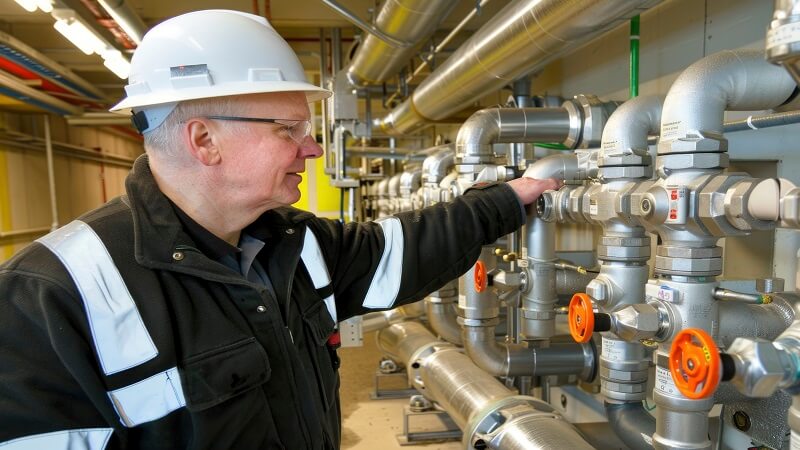Key Takeaways
- Importance of regular maintenance in pipeline integrity and performance.
- Diverse pipeline-pigging tools are available and have specific applications.
- Steps to implement an effective pipeline maintenance strategy.
- Common challenges faced during pipeline maintenance and solutions.
The Importance of Regular Maintenance
Regular maintenance is crucial for ensuring pipelines’ integrity, safety, and efficiency. Without it, pipelines risk leaking, cracking, and other problems that might require expensive repairs or harm the environment. There are numerous ways to maintain pipelines, but one of the most effective is utilizing tools such as pipeline cleaning pigs. These tools help remove debris and buildup, ensuring smooth and efficient transportation.
Understanding Different Pipeline Pigging Tools
Pipeline pigging tools are designed to effectively clean, inspect, and maintain pipelines. These tools come in various forms, such as foam, brush, and intelligent pigs, each serving a distinct purpose. Foam pigs, for instance, are ideal for light cleaning and dewatering tasks due to their flexibility and ease of use. Brush pigs, on the other hand, are more robust and are used to remove stricter deposits within the pipeline. Intelligent pigs, equipped with sophisticated sensors, are used for detailed inspection and data collection.
Steps to Implement an Effective Pipeline Maintenance Strategy
An effective pipeline maintenance strategy involves several key actions that must be carefully thought out.
- Assessment: The first stage uses cutting-edge inspection instruments to evaluate the pipeline’s present state thoroughly. This entails locating current problems in the pipe, such as corrosion, leaks, and accumulation.
- Planning: Once the assessment is complete, the next step is identifying potential problem areas and planning targeted maintenance activities. This includes determining the frequency of inspections and cleanings.
- Tool Selection: Choosing the proper pipeline pigging tools is critical based on the pipeline’s specific needs. For example, a foam pig might be adequate if the main issue is debris buildup. However, intelligent pigs with data collection capabilities would be more effective for detailed inspections.
- Scheduling: Scheduling regular maintenance activities is essential to prevent future issues. This involves planning when to deploy different pigging tools and performing inspections to ensure consistent pipeline performance.
- Documentation:It is crucial to document all maintenance activities and findings for future reference. This ensures that any recurring issues can be quickly identified and addressed, and it provides a historical record that can guide future maintenance strategies.
Common Challenges and Their Solutions
Pipeline maintenance often comes with its own set of challenges. Corrosion, blockages, and mechanical wear and tear are common issues that maintenance teams face. Internal and external corrosion can weaken the pipeline structure, leading to leaks and bursts. Implementing corrosion inhibitors is a widely used and effective method to combat corrosion. When introduced into the pipeline, these inhibitors are chemicals that form a protective layer on the inner walls, preventing corrosive substances from causing damage.
Blockages are another significant challenge in pipeline maintenance. Wax, dirt, and other substances that build up over time are some of the elements that might create these obstructions. Regularly cleaning pigs can remove these deposits and prevent blockages from forming. Brush pigs, with their bristles, can scrub the inner walls of the pipeline, dislodging and removing tough deposits.
Mechanical wear and tear are inevitable, especially in pipelines transporting abrasive materials. Frequent inspections and promptly addressing any signs of wear and tear are essential. Intelligent pigs equipped with sensors can detect areas of the pipeline that are starting to weaken, allowing for early intervention before any significant damage occurs.
Adopting these solutions can significantly reduce the incidence of pipeline issues, ensuring a longer lifespan and better performance.
The Role of Data in Pipeline Maintenance
Data plays a critical role in modern pipeline maintenance. By collecting data through intelligent pigging and other inspection tools, operators can identify trends and predict potential failures before they occur. This data-driven approach allows for a more proactive stance in pipeline maintenance than a reactive one.
For example, suppose data collected over several inspections reveals a pattern of certain types of deposits forming in specific pipeline sections. In that case, maintenance teams can take preemptive measures to address those areas before the problem escalates. Additionally, data can help optimize the use of resources. Instead of deploying maintenance teams at regular intervals, they can be dispatched only when the data indicates an impending issue, saving time and costs.
Industry reports have shown that data-driven maintenance can reduce unexpected downtime and significantly extend pipeline lifespans. This method improves pipeline safety and maximizes the use of maintenance resources, which increases process efficiency and lowers costs overall.
Adhering to Industry Standards
Industry standards, such as those set by the American Petroleum Institute (API) and the Pipeline and Hazardous Materials Safety Administration (PHMSA), are crucial for safe and efficient pipeline maintenance. These guidelines address a range of pipeline operating topics, including material selection and inspection protocols. Adhering to these principles enhances operational safety and reduces the likelihood of fines for noncompliance. Through the incorporation of industry knowledge and best practices from research, they also aid in maintaining pipeline integrity and performance. Thus, adhering to these standards ensures regulatory compliance and promotes safer, more efficient, and longer-lasting pipeline operations.
